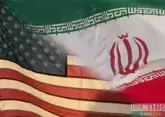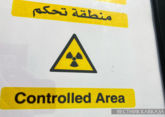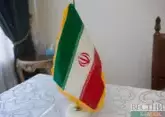After years of feuding, Iran and Saudi Arabia are ramping up efforts to bridge their longtime hostilities as the Taliban's (banned in Russia) takeover in Afghanistan threatens to spread chaos beyond Central Asia and destabilize the Middle East as well.
As Middle East power brokers, Iran and Saudi Arabia see the Taliban as a shared threat. With the U.S. also planning to withdraw troops from Iraq, the countries could seek even deeper cooperation to fill the power vacuum left in the region, Nikkei Asia writes.
Iraq has invited both Iran and Saudi Arabia to a conference of neighboring nations in Baghdad this month, an Iranian government source told Nikkei. Iranian President Ebrahim Raisi told Iraqi Prime Minister Mustafa al-Kadhimi that he will attend in a phone call on Tuesday.
In addition to Iran and Saudi Arabia, Iraq has invited representatives from the European Union, Turkey, the United Arab Emirates, Qatar and Egypt to the upcoming gathering. Iranian and Saudi senior officials had already held talks in Iraq in April, and may now seek a higher level of dialog.
The situation in Afghanistan is expected to dominate discussions as the Taliban takeover threatens to reenergize radical Islamist movements in Central Asia and the Middle East, which had been on the decline in recent years.
Raisi this week expressed support for reconstruction in Afghanistan following the U.S. "defeat" in the country. A Shiite-majority country, Iran has been particularly concerned by the Taliban's growing influence and has condemned the group's extremist ideologies, like barring women from schools and work outside the home. Iran itself has encouraged women's participation in society since the Iranian Revolution in 1979.
The Taliban follows a radical form of Sunni Islam, which is dominant in Saudi Arabia. The Saudis had recognized and supported the Taliban-controlled government in Afghanistan prior to the 9/11 terrorist attacks. But Crown Prince Mohammed bin Salman is now advancing modernization efforts in the country, and there are concerns that a changing society could push disgruntled radicals into the arms of groups like the Taliban.
Iran and Saudi Arabia cut ties in 2016 after Riyadh executed a prominent Shiite cleric. Proxy conflicts that followed, like the civil war in Yemen and political turmoil in Lebanon, has since loomed heavy over the Middle East. Caught in the middle of its two key backers, Iraq is urging the countries to mend the fence.
Saudi Arabia is also being forced to reevaluate its diplomatic and security policies regarding Iran following the departure of U.S. President Donald Trump, who was staunchly anti-Tehran. When Saudi oil facilities came under attack in 2019, the U.S. blamed Iran but did not take retaliatory action.
The global decarbonization movement is also driving the two rivals closer together. Iran and Saudi Arabia both depend on oil revenues, and face the urgent need to diversify their economies and create more employment. Medical reforms are a priority as well in light of the coronavirus pandemic.
Countries in the region and beyond are scrambling to fill the power vacuum left by the U.S. exit from Afghanistan and its planned withdrawal from Iraq. But a regional order that excludes the U.S. faces mounting uncertainties.
China and Russia are both looking to expand their clout in the Middle East, but they are primarily focused on short-term gains, meaning topics like democratization and human rights that could turn into major flashpoints down the road may take a back seat. Efforts to resolve the Israeli-Palestinian conflict, a major destabilizing force in the region since World War II, has also stalled.










